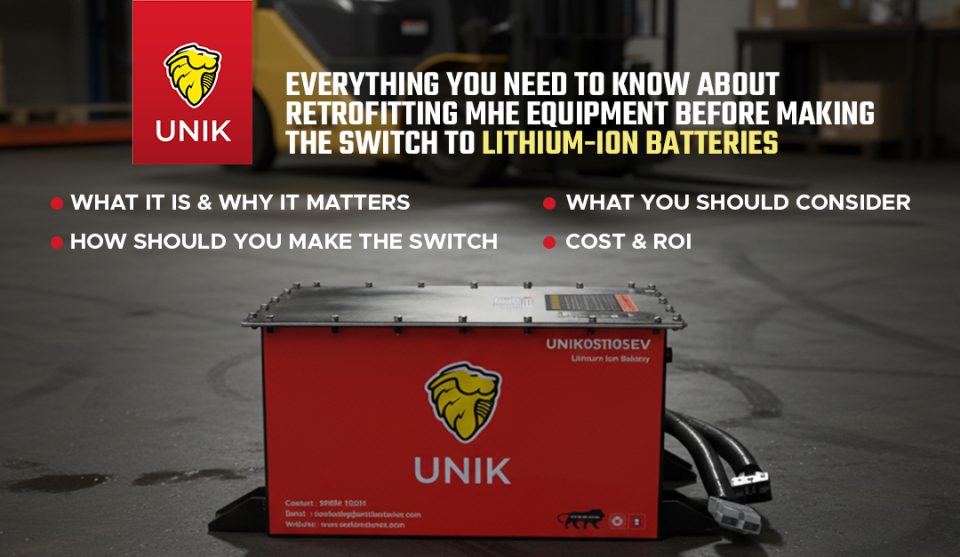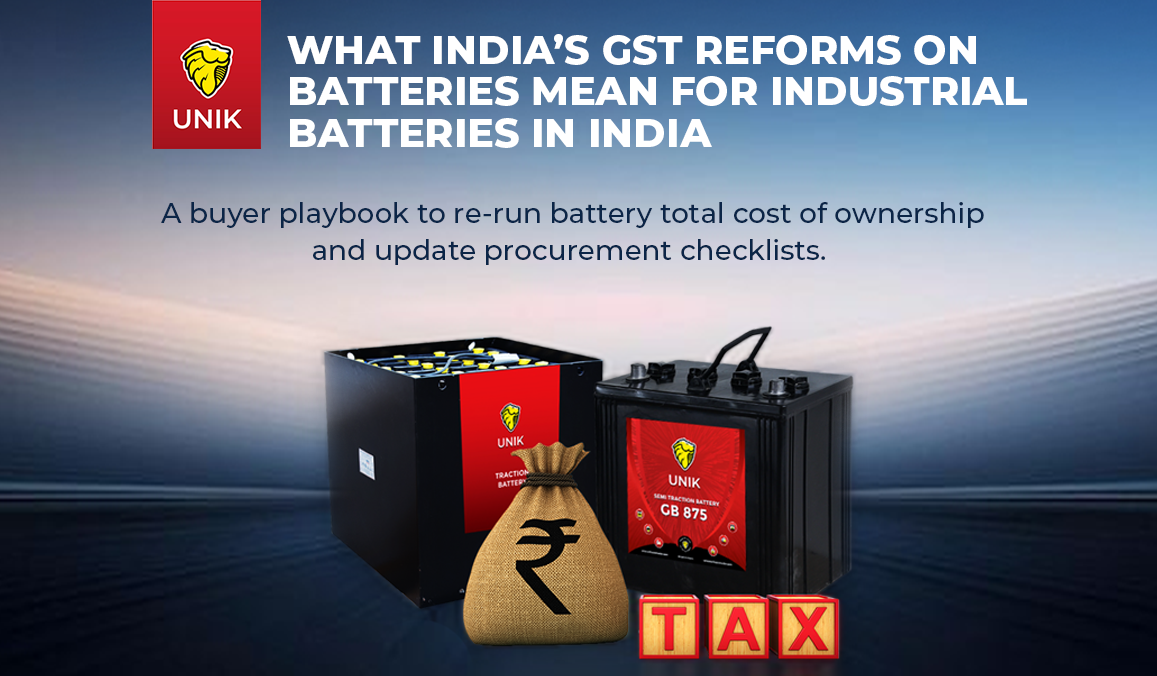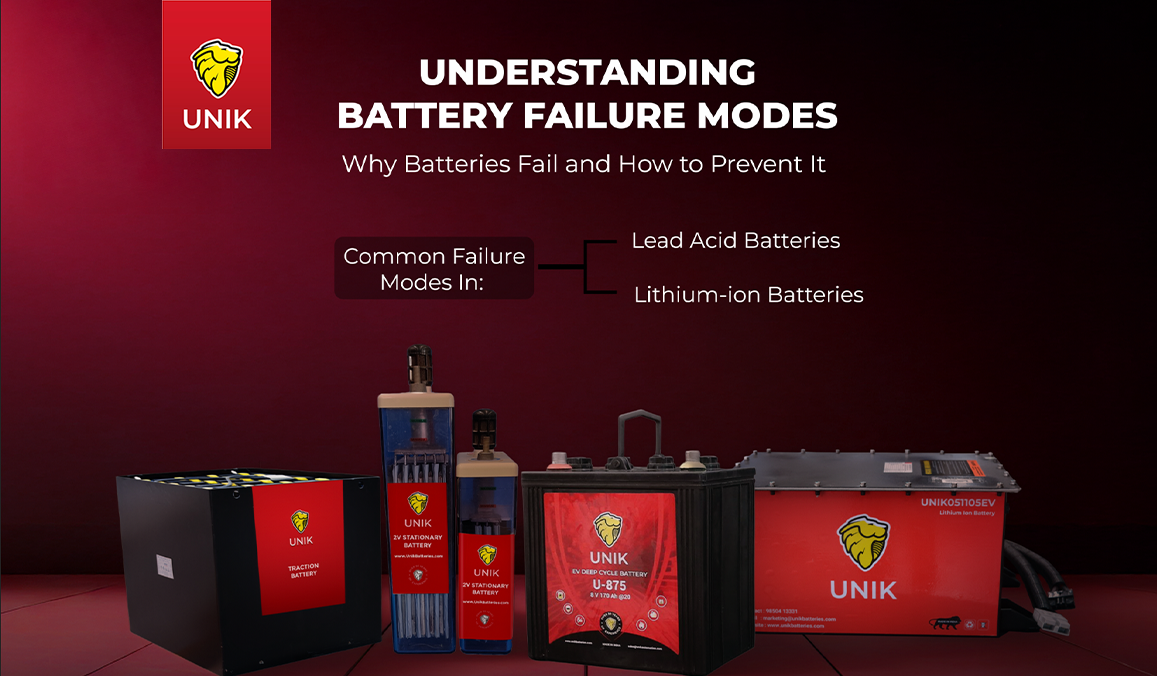Unik Techno • August 20, 2020
What happens if lead acid battery runs out of water?
What happens if lead acid battery runs out of water?
A lead acid battery has positive & negative plates fully immersed in electrolyte which is dilute sulphuric acid.
The concentration of electrolyte is defined & specified for batteries of different applications based on the application & in line with national & international standards.
This concentration is expressed as specific gravity.
This specific gravity is usually determined at design stage by battery manufacturers with relation to the volume of electrolyte which can be accommodated in a cell. The specific gravity is always in a defined range with the maximum specific gravity specified in such a manner so that it does not accelerate corrosion of battery components & allows for release of sulphate from the plates when a battery is on charge. The minimum specific gravity is also such that it retains the conductivity of electrolyte so that there are no problems to charge a fully discharged battery. Thus the volume & concentration of electrolyte form part of the design of battery.
As regards battery plates the active materials of the plates are decided in such a manner that the quantity of active materials as well as surface area of the plates decide battery capacity.
When the level of battery electrolyte reduces to an extent that the top portion of the plates are exposed - a situation is created wherein a certain portion of the plates do not take part in the reaction.
This leads to reduction in battery capacity. This is undesirable & hence it is not recommended to allow the battery to run out of water.
Regular topping up with distilled or demineralized water ensures that level of electrolyte is maintained. Evaporation of water component of battery electrolyte has to be compensated by topping up with water on a regular basis at defined intervals.
Another effect of reduction of electrolyte due to evaporation of water is increase in concentration of electrolyte i.e. increase in specific gravity. An increase in specific gravity of electrolyte with plates not fully immersed in electrolyte results in heating up of cell on charge. The battery can get damaged since corrosion of internal components used in battery manufacturing is accelerated in the acidic electrolyte at elevated temperatures.
A physical effect of reduction of water is heating up especially during the last stages of charging or in case of an undesired overcharging. Electrolyte also acts as a coolant though this may not be its main purpose for its presence in a battery. Hence the problems of thermal runaway faced by sealed maintenance free (SMF) or valve regulated lead acid (VRLA) batteries is not a phenomenon faced by designers of flooded electrolyte lead acid battery designers.
Finally coming to the main question as to what happens when a lead acid battery runs out of water – totally i.e. electrolyte has fully dried up or battery has been tilted or stored upside down due to which the electrolyte has spilled. Please note that we must not remove acid completely from flooded electrolyte lead acid batteries once it has been filled with acid & charged.
A lead acid battery consists of a few major components viz. the positive electrode, negative electrode, sulphuric acid, separators & tubular bags.
In charged condition the positive electrodes are lead dioxide and negative electrodes are sponge lead.
Sponge lead is highly reactive in the presence of moisture & oxygen and gets converted to lead oxide. In the process of conversion to lead oxide it gets discharged & heated up.
Hence it is necessary to ensure that the acid is not spilled or drained from a wet battery once it is filled and charged.
As and when a battery filled with acid is drained of acid the wet moist negative electrodes come in contact with atmospheric oxygen. An exothermic reaction takes place releasing an enormous amount of heat thereby discharging the negative plates (electrodes) and oxidizing the sponge lead to lead oxide.
During this exothermic process of heating up of the negative electrodes, the other components within the cell i.e. separators, tubular bags, plastic components like bottom bars, vent plugs, cell covers and rubber bushes fitted to cell covers get deformed, degraded or damaged.
Whilst it is possible to revive such batteries if they are not fully damaged, the life & performance of such batteries do get adversely affected and hence it is very important to ensure that there is no spillage of acid from fully charged batteries. Loss of electrolyte from the top of the plates in the normal course without exposing the electrodes is however different and cannot be equated to spilling.






